Undercut Haircut for Men: Styles, Cuts & Styling Guide
From classic short cuts to fade carvings, explore diverse styles, maintenance tips & styling recommendations. Use our free professional filter tool to instantly create your signature undercut look!
💇 The Undercut: A Man's Second Calling Card
A hairstyle is a man's second calling card. Among popular men's styles, the Undercut has long been a trendsetter, known for its sharp layers and versatile look. This cut creates a bold, clean, and stylish statement by shaving the sides and back very short while keeping the hair on top long, for a striking contrast.
- Sharp Contrast: The sides and back are shaved very short (often to skin level), while the top is kept long - usually 7-13 cm (3-5 inches).
- Versatile Top Styles: The longer top hair can be styled in many ways: slicked back, side-parted, messy/textured, or curled/permed.
- Clean Lines: Features sharp edges around the hairline, often with a defined part (razor line) or fade.
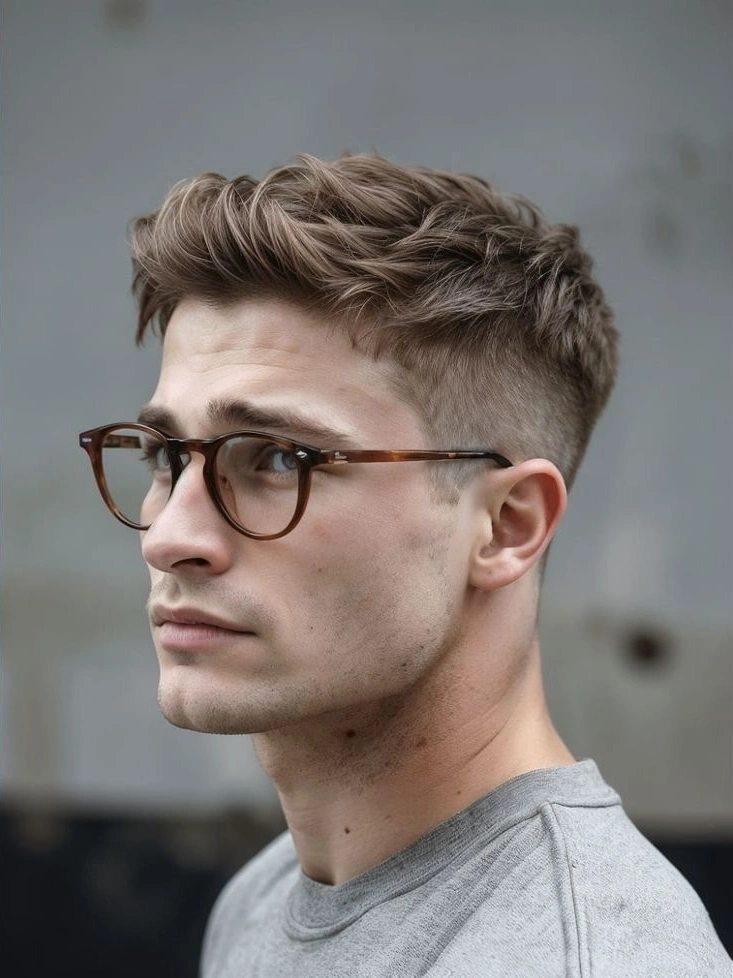
Try it on with your selfie!
📖 The Classic Undercut Style Guide
Undercut Fade
Hair length changes gradually from very short (even showing scalp) near the ears to much longer on top. This creates smooth layers. It allows styling the top hair and gives a sleek, modern look.
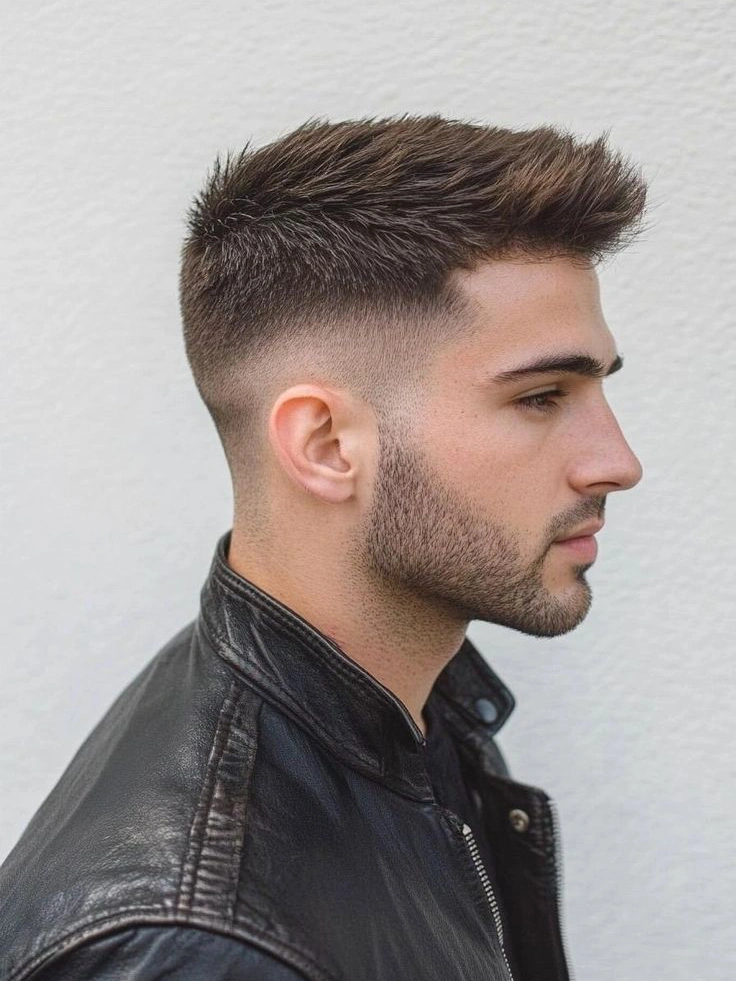
Try it on with your selfie!
Man Bun Undercut
Long hair on top (at least 15 cm long) is tied in a bun ("man bun"). Add natural waves or curls for more volume. The sides and back are very short (fade or shaved). Often has a sharp line or pattern shaved near the hairline for a strong, masculine look.
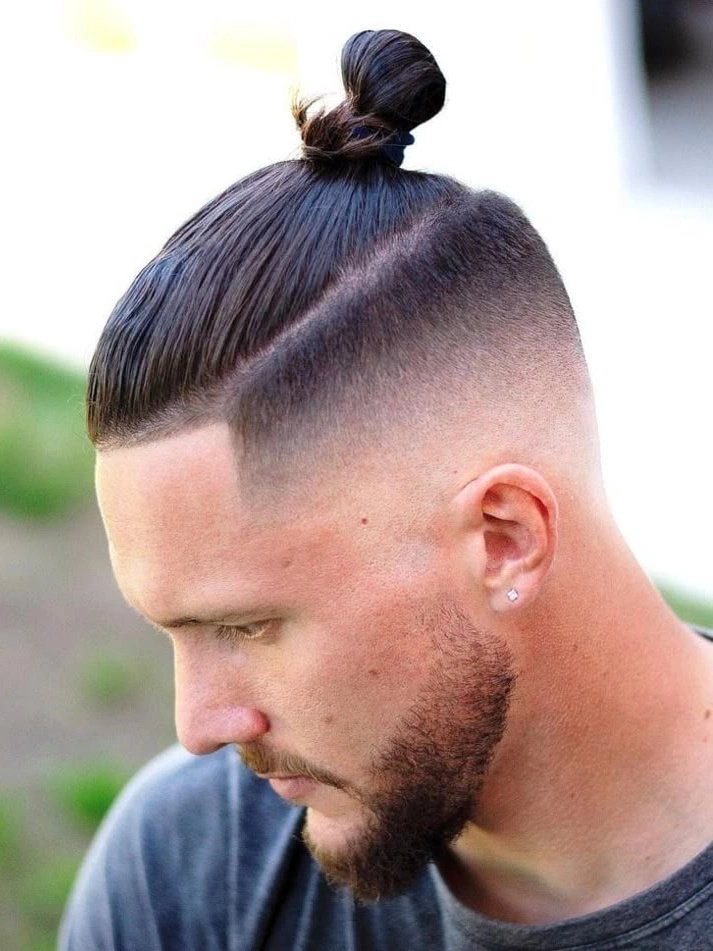
Try it on with your selfie!
Curly Undercut
Sides and back are very short (fade or shaved). Leave naturally curly hair or get curls on top. Use wax to create messy, fluffy curls. This style uses strong differences: straight vs. curly, short vs. long, to highlight the curly texture and volume.
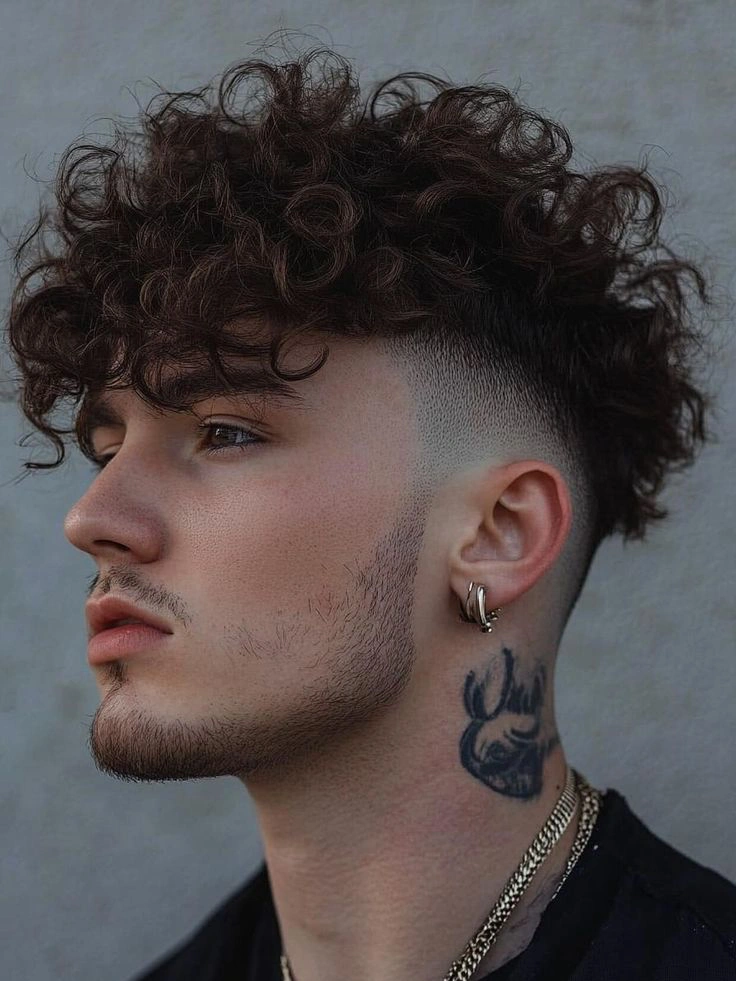
Try it on with your selfie!
Slick Back Undercut
Combines a classic slick back style with modern fade sides. Hair on top must be at least 7 cm long. Comb it straight back using strong wax for a smooth, shiny finish. The hairline needs to be sharp and clean. Some designs add a shaved pattern near the hairline for style.
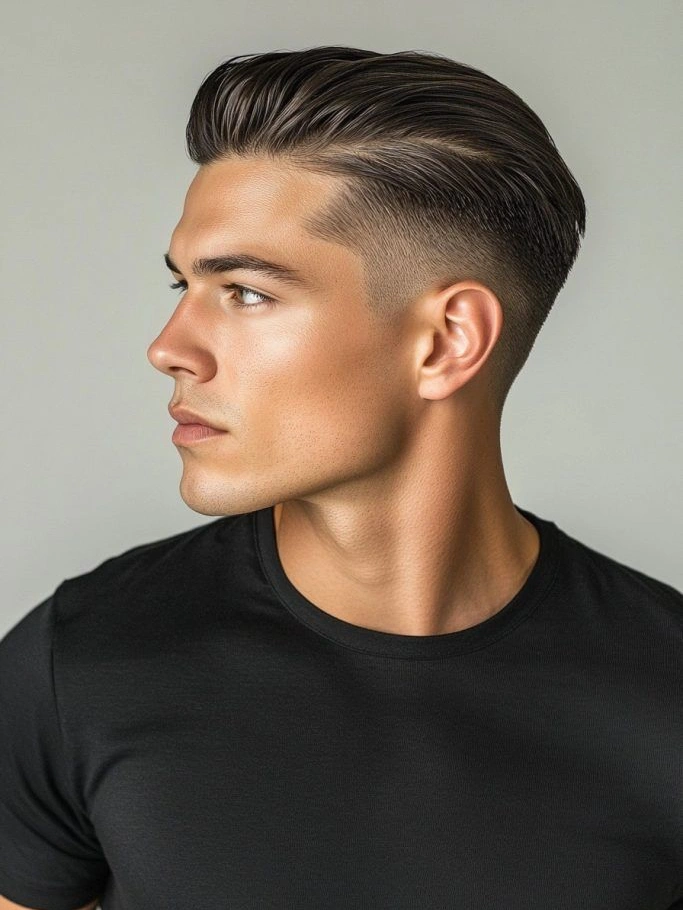
Try it on with your selfie!
Undercut With Pompadour
Combines a classic pompadour top with modern fade sides. Hair on top must be at least 7 cm long (ideal 10-15 cm). Comb it back and push it upwards to create a high, rounded front ("pompadour"). Unlike a slick back, the pompadour top should look full and lifted, not flat. Use curls or wax to build natural volume and shape.
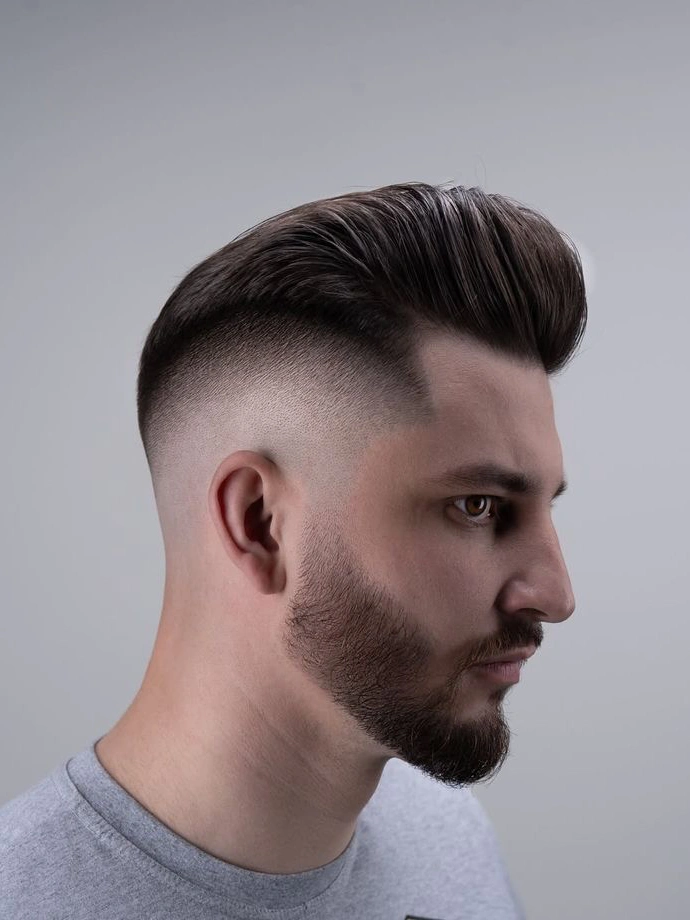
Try it on with your selfie!
Side Swept Undercut
Keep hair on top long (usually at least 10 cm). Comb it to one side (often in a 3:7 or 2:8 part). Let it fall or curl slightly. This gives a more relaxed look than a slick back. The sides have a fade cut, adding volume on top. The back often keeps a sharp "triangle" shape line for a strong look.
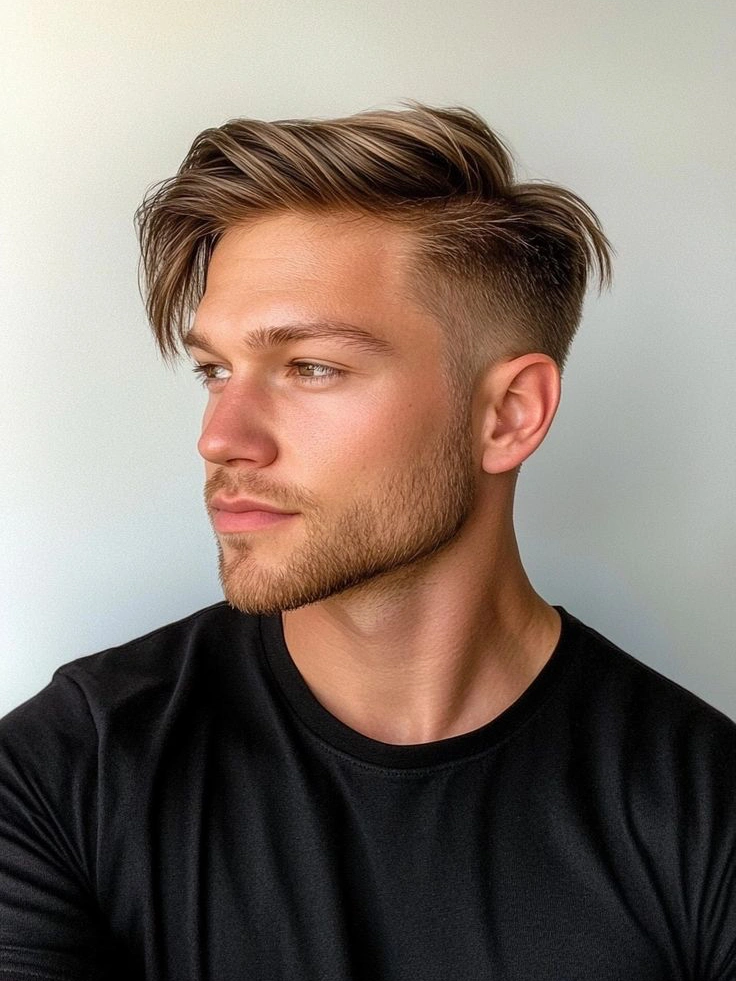
Try it on with your selfie!
🕰️ History & Origins of the Undercut
The Undercut first appeared during the Edwardian era (1901-1910). As modern sports like rugby grew popular, men found long hair impractical, so they shaved the sides short. By the 1920s-1930s, it became a mainstream style in Europe and America—especially among gangsters and German officers.
After WWII, the style faded but made a comeback thanks to celebrities like MacLymore, Kim Jong Un, David Beckham, and Win Butler. Today's Undercut blends retro and modern elements, turning a practical haircut into a symbol of personal style.

Try it on with your selfie!
✂️ How to Get the Perfect Undercut
Want an Undercut but not sure how to ask your barber? Remember these key tips:
Length Guide:
- Sides: Cut very short (≈2.5 cm / 1 inch, adjustable).
- Top: Keep at least 7 cm (3 inches), ideally 13 cm (5 inches).
Best for Your Face Shape:
- Round Face: Shave sides short + add height on top → lengthens face.
- Square Face: Fade sides + soft texture on top → softens jawline.
- Long Face: Avoid too much height; try a side part → won't lengthen face.
- Oval Face: Fits almost any Undercut style → easy to pull off.
Tips: With so many Undercut Hiarcut to choose from, finding the perfect style for your face shape is key.
Not sure about your face shape? Take our Face Shape Detector quiz to find the perfect haircut for you!
Hair Type Tips:
- Fine/Thin Hair: Go for a curly/textured top → adds volume.
- Thick/Coarse Hair: Keep it straight → use length contrast for style.
- Thinning Hair: Add layers + use product → creates fullness.
- Receding Hairline: Avoid slick-backs; try a side part → covers the hairline.
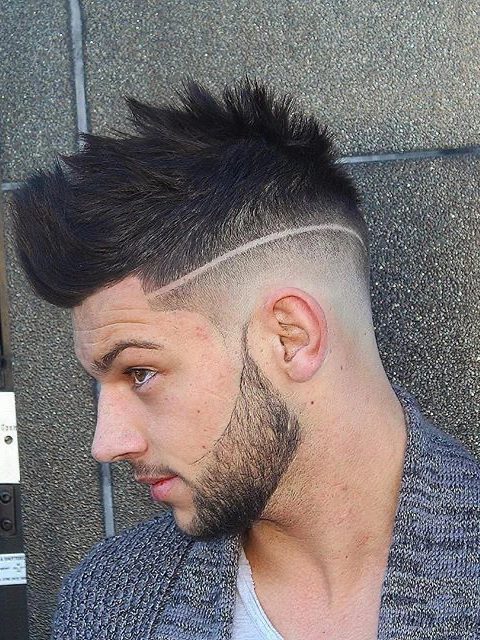
Try it on with your selfie!
Frequently Asked Questions
Get answers to the most common questions about the Undercut haircut.
What face shapes are best suited for an Undercut?
The undercut adapts beautifully to all face shapes when customized properly - round faces benefit from high fades and voluminous tops to create length, square jaws are softened with tapered sides, while longer faces should avoid excessive height and opt for textured side parts to add width.
How to maintain sharp fade lines at home?
Invest in quality clippers with adjustable guards (1.5-6mm), trim sides every 10 days using a 45-degree upward motion along your fade line, and apply matte styling paste to camouflage new growth between cuts while keeping edges defined.
Is an Undercut low maintenance?
While daily styling is quick (just 3-5 minutes with pomade), the signature crisp fade requires professional trimming every 2-3 weeks to maintain its sharp contrast against longer top sections that typically need reshaping every 8 weeks.
Can Undercuts work for curly or thin hair?
Absolutely - curly textures showcase gorgeous contrast when cropped tightly on sides while leaving 8-10cm of defined curls on top, while fine hair gains visual volume through layered cutting techniques and strategic texturizing products like sea salt spray.
What's the difference between Fade, Taper and full shave?
Fades create smooth transitions between lengths (high = dramatic/social, low = subtle/professional), tapers gradually shorten hair only around ears/neckline for conservative styles, while full shaves showcase stark skin-to-hair boundaries for maximum contrast.
Are Undercuts appropriate for professional settings?
Yes when executed thoughtfully - pair conservative low tapers with neatly swept side parts in corporate environments, while creative fields embrace disconnected fades and textured tops, avoiding only extreme elements like vivid colors or carved patterns.
Try the Best Free AI Hairstyle Changer Online!
Discover your perfect hairstyle with our 100% free AI Hairstyle Changer!
Unlock More Hairstyles & Styling Secrets
Take your look to the next level! Discover exclusive hairstyle ideas and powerful AI tools. Find the perfect style that makes you stand out anywhere.
Hairstyle Changer
Upload your photo and try different hairstyles, hair colors, and cuts virtually
Buzz Cut Filter
Buzz cut is a popular style that is perfect for any face shape. It is easy to maintain and can be styled in many different ways.
Mullet Filter
Mullet is a popular style that is perfect for any face shape. It is easy to maintain and can be styled in many different ways.
Butterfly Haircut
Butterfly haircut is a popular style that is perfect for any face shape. It is easy to maintain and can be styled in many different ways.
Curtain Bangs
Curtain bangs are a popular style that is perfect for any face shape. It is easy to maintain and can be styled in many different ways.
Bob Haircut
Bob haircut is a classic style that is perfect for any face shape. It is easy to maintain and can be styled in many different ways.
Balayage Hair Colors
Explore Balayage hair color! Use our AI try-on tool to virtually preview your perfect sun-kissed look before your salon visit.
Undercut Haircut
The undercut haircut is bold and versatile, with shaved sides and longer hair on top.
Copper Hair
Copper hair is a popular style that is perfect for any face shape. It is easy to maintain and can be styled in many different ways.
Braided Hairstyles
Braided hairstyles are a popular style that is perfect for any face shape. It is easy to maintain and can be styled in many different ways.
Medium Hairstyles For Men
Medium hairstyles for men balance style and practicality, offering versatile looks for occasions.
Hairstyles For Kids
Hairstyles for kids are a popular style that is perfect for any face shape. It is easy to maintain and can be styled in many different ways.
Curly Hairstyles
Curly hairstyles are a popular style that is perfect for any face shape. It is easy to maintain and can be styled in many different ways.
Fade Haircut
Fade haircut is a popular style that is perfect for any face shape. It is easy to maintain and can be styled in many different ways.
Low Taper Fade
The low taper fade is a clean and subtle haircut, perfect for a polished and modern style.
Haircuts For Short Hair
Haircuts for short hair are trendy, easy to style, and highlight facial features beautifully.
Haircuts For Double Chins
Haircuts for double chins help create balance by framing the face and drawing attention away from the chin area.
Korean Haircut For Men
Korean haircuts for men are modern, versatile, and inspired by K-pop and Korean fashion trends.
French Crop Haircut
French crop haircut is a stylish and low-maintenance cut with short sides and a neat fringe, perfect for a modern and clean look.
Funky Hairstyles For Men
Funky hairstyles for men are creative, stylish, and perfect for those who like to stand out.
Textured Crop Filter
A textured crop filter adds layers and movement, creating a stylish and fresh look.
Warrior Cut
The warrior cut is bold and powerful, inspired by ancient fighters and modern edgy styles.
Wolf Cut On Bob Shag
The wolf cut on bob shag mixes edgy layers with a playful bob, creating a unique and trendy style.
Straight Hair Filter
The straight hair filter gives a sleek and polished look, perfect for a neat and elegant style.
Silver Hairstyles
Silver hairstyles are stylish and edgy, often combining sharp lines with modern fashion trends.
Fade Haircut For Indian
Fade haircut for indian is a popular style that is perfect for any face shape. It is easy to maintain and can be styled in many different ways.
Long Hair Filter
Try stunning long hairstyles instantly with AI - from classic layers to beach waves and sleek straight looks.
Short Hair Filter
Try chic short hairstyles instantly with AI - from classic bobs to trendy pixie cuts and textured shags.
Unlock Amazing Free AI Tools
Explore a variety of free AI tools to instantly enhance your photos, videos, and creative projects.
Hairstyle Changer
Upload your photo and try different hairstyles, hair colors, and cuts virtually
AI Hair Color Changer
Instantly preview how different hair colors look on you-powered by AI for realism and accuracy
AI Age Filter
Filter based on your age to get the most flattering looks
AI Fat Filter
Upload your photo and let the AI Fat Filter simulate different weight variations realistically
AI Makeup Generator
AI Makeup Generator is an intelligent tool that applies virtual makeup to your photos instantly. Try preset styles like Elegant or K-Beauty, or create your own look with a custom prompt.
AI Hair Design
AI Hair Design is an intelligent hairstyle generator that provides personalized haircut ideas and recommendations based on your face shape and features.
AI Headshot Generator
AI Headshot Generator lets you create professional, studio-quality headshots in seconds. Perfect for LinkedIn profiles, resumes, or business branding — no camera, no photographer needed.
Face Shape Detector
Analyze your face shape with AI technology and get personalized recommendations for the most flattering looks
AI Facial Analysis
Analyze your face shape with AI technology and get personalized recommendations for the most flattering looks
AI Smile Filter
Upload your photo and let the AI Smile Filter turn ordinary photos into natural smiles
AI Bald Filter
Upload your photo and let the AI Bald Filter show how you'd look without hair
AI Beard Filter
Upload your photo and let the AI Beard Filter add different beard styles to your look
AI Skin Color Changer
Upload your photo and preview different skin tones instantly with AI simulation
AI Halloween Filter
Upload your photo and let the AI Halloween Filter transform you with spooky effects
Change Eye Color
Transform your look with AI-powered eye color change. Try different eye colors instantly and see how they enhance your natural beauty.
AI Baby Generator
AI Baby Generator is a creative tool that uses advanced face prediction technology to blend two photos and generate a realistic baby image.